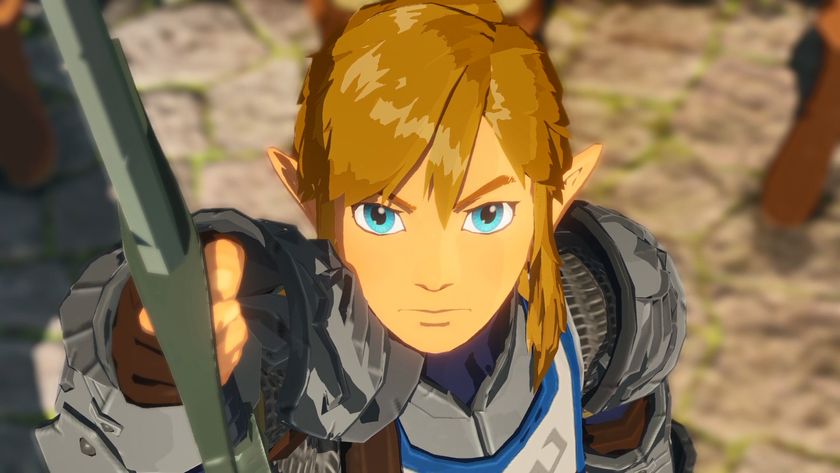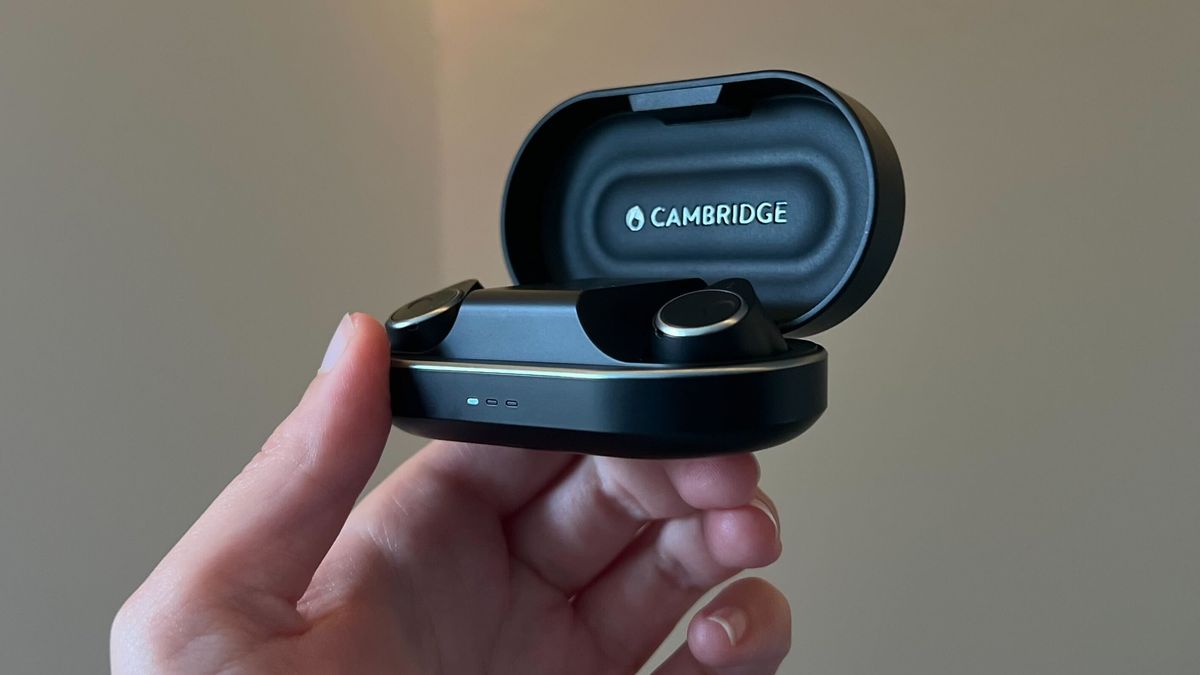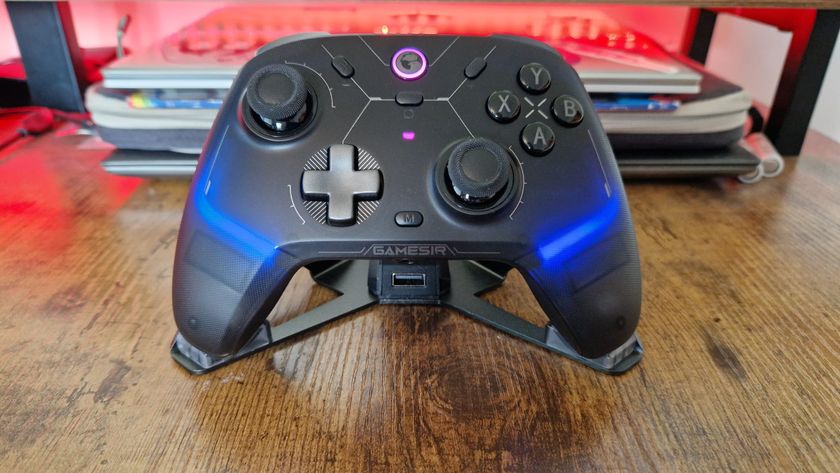12DOVE Verdict
The Cambridge Audio M100s are a little too slow for gaming earbuds, but if you’re on the hunt for a high-end musical companion there’s some fantastic value for money here. You’d usually be spending far more on this feature-list and overall performance but Cambridge Audio manages to undercut both Sony and Apple with its latest offering.
Pros
- +
Super detailed audio
- +
Richly textured sound design
- +
Strong noise cancelling
- +
Easy fit and comfortable shape
- +
Fantastic battery life
- +
Matt Berry
Cons
- -
80ms latency is too slow for gaming
- -
Transparency mode has some problems
Why you can trust 12DOVE
It’s been just over three years since Cambridge Audio brought its latest earbuds to market, the Melomania Touch - and the renowned Hi-Fi brand has been busy. The new Cambridge Audio M100s pack active noise cancellation for the first time, as well as an improved design, fantastic battery life, and a dedicated game mode for low latency listening. These are audiophile buds first and foremost, with that gaming mode only reaching an 80ms latency. That automatically puts them out of the running as some of the best gaming earbuds, but in the music world they hold a particularly high value for money.
| Price | $219 / £169 |
| Connection | Bluetooth 5.3 |
| Driver | 10mm Neodymium dynamic |
| Microphone | 3x noise cancelling per bud |
| ANC | Yes |
| Additional ear-tips | 5 (3x silicone, 2x foam) |
| Controls | Touch (playback, volume, call, noise cancelling mode, voice assistant) |
| Battery | Up to 10 hours (ANC on) / 16 hours (ANC off) + 23 hours in case (ANC on) / 36 in case (ANC off) |
| Compatibility | PC, mobile, Nintendo Switch |
Design

The Cambridge Audio M100s have a smaller footprint than I’m used to, having run a set of AirPods Pros pretty comfortably for the last few years. The chunkier body in-ear didn’t stick out too far during testing, and fit comfortably for around two hours of use at a time. Of course, there’s a variety of different earbud sizes available in the box, with two foam options alongside the standard small, medium, and large silicone covers. I prefer a medium fit for earbuds, and the size options here were on par with what I’ve experienced before. There’s no ear-fit test available, but it’s pretty easy to work out which size feels right in that initial unboxing.
There’s about a gram of difference in weight between the M100s and my AirPods Pros, and I did feel it a little when switching back and forth. However, Cambridge Audio’s buds have a solid weight distribution to them - they feel present, but never cumbersome. Crucially, they never felt like they were about to fall out - even during the odd sprint after the dog. There’s nothing physically holding them to the ear like you might see in fitness-oriented buds, and I wouldn’t trust them for more energetic movements, but I wasn’t worried about losing them during everyday use.

The main bud is a simple black color with a few silver accents running throughout. It’s a slick design that doesn’t attempt anything too out there, and - outside of the odd limited edition model - it’s the only option you’ll find on the market. A small touch-capacitive panel sits on each bud, and while these controls generally registered well, the actual placement of this button was difficult to hit with accuracy. I never really got the hang of these touch controls during my three weeks fo testing, purely because I couldn’t get that placement down on the first few tries.
Each bud slots into the pill-style charging case, a fairly large black clamshell of full plastic construction. There’s a comfortably sturdy hinge in here, with a snap to its close that feels particularly satisfying. While it’s a little chunky for small pockets it’s still easily transportable.
Features
There’s a lot to take in here, and for a good price too - but we’ll start with what’s new, and that’s active noise cancellation. I’ve come from an original set of first generation AirPods Pros - earbuds I’m looking to upgrade from due to their lower quality noise cancelling. My first outing with the M100s confirmed that my current buds were behind the times. Setting the noise cancellation mode to ‘High’ (you can choose between three tiers of power), I was impressed by the hum of silence replacing the traffic noise that usually cuts through my podcasts on a dog walk.
This is powerful stuff, putting a dampener on everything from an train’s rumble to the clack of a keyboard. I did, however, notice that higher frequency sounds weren’t quite so blocked. A fairly high-pitched leaf blower took me by surprise one day - bleeding straight into my audio in a way other sounds didn’t dare. This was an exception in my testing, though - in general, this is particularly impressive tech considering the price point.
Cambridge Audio has also added a Transparency mode to compete with more sophisticated outings from Sony and Apple. This is a little less inspiring. I’ll confess, this is the first time I’ve used a transparency setting in noise cancellation - but I was still disappointed with the background hum that accompanied it. On top of that, it often seemed to dip in and out without a significant sound cue to do so, opening up for a few seconds before reverting back to its noise cancelling state - and often in only one earbud at a time.
The audio itself is run through 10mm dynamic neodymium drivers, a size increase over the Touch’s 7mm. Perhaps more importantly, though, are the supported Bluetooth codecs. This is a laundry list of high-end compatibility, with LE Audio, aptX Lossless, aptX Adaptive as well as the standard AAC and SBC options. Of course, you’ll only be able to make the most of the more lossless-focused codecs on supported devices and services (Tidal, or Apple Music, for example) but it’s a win for those investing in their streaming quality. It’s also another excellent value-for-money tick - you’d usually be spending a lot more to get this kind of support.

Battery life is equally impressive. During one week of testing I used the buds for around two hours a day in full ANC and two or three hours in the evening in the system’s game mode. At the end of that week my case was still at 25% battery life and I had a full charge in each bud. That’s around an extra 15 hours of listening time left on the docket. Cambridge Audio estimates each bud can last 10 hours by itself, with an extra 23 hours stored in the case (at full noise cancellation). That’s pretty darn impressive, especially considering I’m often charging my AirPods every few days.
The Bluetooth connection was always rock-solid during my testing, and the multi-connection options made switching between my phone and Asus ROG Ally or Nintendo Switch particularly easy. There was no need to re-pair, I simply had Matt Berry letting me know which device I was connected to as soon as everything was powered on. What? Oh yeah - Laszlo Cravensworth can voice your connection status and noise cancelling modes, just pick the Southwark option in the app menu. It fills me with far too much joy, and probably added about 10% to my final review score in itself.
I was impressed with the companion app’s streamlined design, simple but still slick-feeling interface, and intuitive navigation. The app opens you up to a whole roster of extra features, like six EQ presets (and a seven-band equaliser), mono mode, sleep mode (which kills your touch controls and silences Matt), and - of course - gaming mode.
After hearing the audio coming out of these buds, I was really hoping this gaming mode was going to come through for us. Alas, at 80ms of latency it just isn’t fast enough to keep up even with thumb tappers on mobile. I tried some more competitive titles; Counter Strike and Apex Legends, and gave up almost immediately. Even slower games like Octopath Traveler felt clunky and off-putting with this delay - it’s just not good enough for gaming. There’s also no 2.4GHz connection option, so PlayStation compatibility and faster PC connections are out the window as well. For reference, the cheaper Razer Hammerhead Hyperspeeds offer a 40ms latency in Bluetooth and a USB-C 2.4GHz receiver for an even faster connection.
There is a mic for call handling (and if you do want to push through with gaming), featuring some neat noise cancelling features. My voice was nicely isolated from the background during testing, but did come across quite woolly, with words starting on softer sounds often being picked up just a microsecond too late to truly pick themselves out.
Performance
Cambridge Audio has always put its sound quality and the forefront of its design, and the M100s follow suit. In their out-the-box flat EQ preset, these are particularly natural sounding buds, allowing complex layers of music to stand out independently and allowing each instrument plenty of space to truly shine.
Oh Wonder’s sparser twinkles held pride of place in these buds, with an incredibly clean feel to each track and a crispness I haven’t heard before. The more cacophanous mids of Grandson were given the same treatment, with a satisfying gravelly texture to vocals and a piercing quality to Blood // Water’s synth drop that shone beautifully without taking over from other elements.
I did start to notice a slight gap in power on tracks like Oh No!!, though. While there’s certainly a nice balance between everything, that balance comes at the sacrifice of a little bass oomph. There was a range somewhere around the lower mids that felt a little neglected in the ‘Electronic’ preset. Boosting the lower ranges in-app allowed this to shine a little better, though.
In-game imaging was crisply detailed, with a warmth that isn’t often explored in more traditional gaming headsets. Directional cues were fairly weak, though latency issues mean these are unlikely to be your competitive gaming companions anyway. There’s a nice balance between ranges for games here - traversing the world of Assassin’s Creed Odyssey I was pleasantly surprised by the deft handling of multiple different sound sources, with everything from dialogue to the clashing of swords jumping through the buds (albeit later than it appeared on-screen). However, first-person shooters and bigger, more fiery explosion-filled games revealed a slightly lethargic sound quality that could quite scale this balance to meet the impact on-screen.
Should you buy the Cambridge Audio Melomania M100s?

If you’re a music lover looking for a pair of high-end earbuds at a price that doesn’t top the market you’re in luck. The M100s pack a serious punch for their price with bright, richly textured audio, excellent noise cancelling, a long-lasting battery life, and comfortable form factor. They do all this at a lower price than their main competitors from Sony, Apple, and Bose - and all while throwing Matt Berry into the mix.
If you’re on the hunt for a new set of gaming earbuds, you’ll want to move along. The M100s are built for music, so even their gaming mode doesn’t pack the speed to keep up with faster on-screen movement. If you can push through that lag (for solo, strategic adventures, for example), you’ll find a solid audio quality with an audiophile’s touch - even if some of the more dynamic qualities of a traditional gaming headset are lost in the mix.
How we tested the Cambridge Audio Melomania M100s
I used the Cambridge Audio M100s for a period of three weeks, using the buds everyday across walks, music, movies, travel, and gaming. I listened to a wide range of genres and artists during this testing period, from more acoustic tones to distortion-heavy electronic / rock, as well as podcasts and audiobooks.
I tested the M100s on an Android RedMagic 9S Pro with Tidal (aptX Lossless) and through regular iPhone / Spotify channels as well. I used a Razer Blade 14 gaming laptop, Nintendo Switch OLED, and Asus ROG Ally X to test across Assassin’s Creed: Odyssey, Counter Strike, Apex Legends, Princess Peach: Showtime, and Octopath Traveler. For more information on how we test gaming headsets, check out the full 12DOVE Hardware Policy.
We’re also rounding up all the best wireless gaming headsets and the best PC headsets on the market. Or, for more portable options, take a look at the best Nintendo Switch headsets available.

Managing Editor of Hardware at 12DOVE, I originally landed in hardware at our sister site TechRadar before moving over to GamesRadar. In between, I've written for Tom’s Guide, Wireframe, The Indie Game Website and That Video Game Blog, covering everything from the PS5 launch to the Apple Pencil. Now, i'm focused on Nintendo Switch, gaming laptops (and the keyboards, headsets and mice that come with them), PS5, and trying to find the perfect projector.

Superman's David Corenswet wants DC to adapt the animated show storyline where the Man of Steel switches places with Batman: "That would be fun"

A Minecraft Movie Review: "Jack Black's irrepressible star turn helps elevate this video game adaptation"

Nintendo admits "there were times when we wished the Switch system's processor was faster" so that "developers could make any kind of game they wanted"









